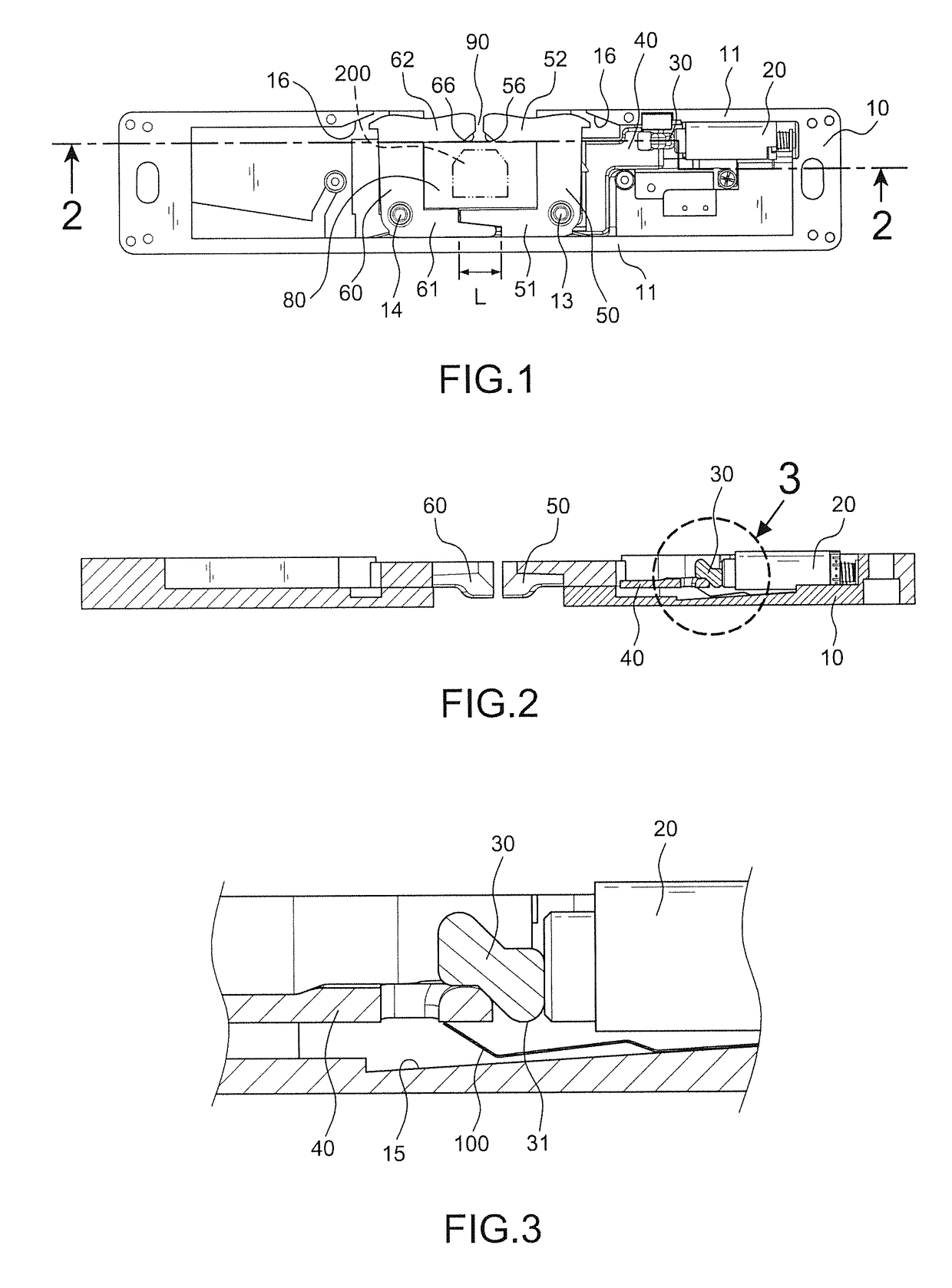Electric lock for doors
a technology for electric locks and doors, applied in the direction of building locks, construction, fastening means, etc., can solve the problems of inability to operate properly, complex structure, and high production cost of conventional electric locks, so as to avoid dust fals, reduce production cost, and simplify the effect of structur
- Summary
- Abstract
- Description
- Claims
- Application Information
AI Technical Summary
Benefits of technology
Problems solved by technology
Method used
Image
Examples
Embodiment Construction
[0026]Referring to FIGS. 1, 6 and 7, the present invention comprises a housing 10, a driving device 20, a moving block 30, a blocking element 40, a first catch 50, a second catch 60, and a cover 70.
[0027]The housing 10 has a side wall 11 surrounding, on which an opening 90 is arranged for a latch 200 to enter; a first column 13 and a second column 14 are arranged symmetrically inside the housing 10 near the inner corners of the opening 90. The cover 70 is disposed on the housing 10 to avoid dust falling in and affect the operation. The first catch 50 has a first inner arm 51, a first outer arm 52, and a first positioning hole 53; near the rim of the first positioning hole 53 a first fillister 54 is arranged. The second catch 60 has a second inner arm 61, a second outer arm 62, and a second positioning hole 63; near the rim of the second positioning hole 63 a second fillister 64 is arranged. The first and second-positioning hole 53, 63 are respectively mounted on the first and second...
PUM
 Login to View More
Login to View More Abstract
Description
Claims
Application Information
 Login to View More
Login to View More - R&D
- Intellectual Property
- Life Sciences
- Materials
- Tech Scout
- Unparalleled Data Quality
- Higher Quality Content
- 60% Fewer Hallucinations
Browse by: Latest US Patents, China's latest patents, Technical Efficacy Thesaurus, Application Domain, Technology Topic, Popular Technical Reports.
© 2025 PatSnap. All rights reserved.Legal|Privacy policy|Modern Slavery Act Transparency Statement|Sitemap|About US| Contact US: help@patsnap.com



